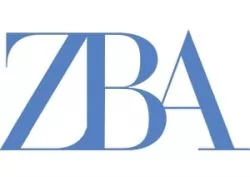1. Introduction
The NCLAT in Technology Development Board v. Mr. Anil Goel1 ("Technology Development Board") has dealt with a complex issue of applicability of inter-se priorities between secured creditors in liquidation and first and second ranking creditors. NCLAT has, respectfully, lost sight of the fact that its judgment will now create confusion and chaos in banking and finance sector, which relies heavily on intercreditor and priorities of ranking. This is a fundamental tenant of banking law globally. This article analyses the impact of NCLAT's judgment.
2. Brief Facts and Background
Insolvency and Bankruptcy Code, 2016 ("Code") provides 2 options to creditors to enforce their security interest. First, relinquish the security interest to the liquidation estate and receive from sale proceeds in accordance with the waterfall mechanism under section 53 of the Code ("Relinquishment"). Secondly, enforcing and realising their security interest outside the liquidation process and in such situation the security interest is not included in the liquidation estate ("Realisation"). A creditor realising its security interest outside the liquidation process has to identify the asset that is being realized outside the liquidation estate.
In banking transactions, creditors can share charge over an asset of a borrower or security provider, however, ranking of charge over the asset may differ. So, one creditor can have first charge and another second charge. The idea is that the first charge holder's claim is fully satisfied and then the residual amount goes to the second charge holder. This is enshrined in section 48 of the Transfer of Property Act,1882 ("ToPA"). The waterfall mechanism under section 52 of the Code is silent on inter-se priorities amongst the secured creditors and herein lies the controversy. Does this mean that the legislature has discarded intercreditor contracts between creditors for distribution of proceeds under section 53 of the Code? Is section 48 of the ToPA not applicable under liquidation waterfall?
The NCLT, Ahmedabad in Technology Development Board v. Mr. Anil Goel2 relied on (and rightly) the Supreme Court's decision in ICICI Bank v. SIDCO Leather3 ("SIDCO") to rule that inter-se priorities amongst creditors are to be respected under section 53 of the Code. This was challenged before the NCLAT.
3. NCLAT's Judgment – A Misplaced Presumption
The NCLAT's judgment can be broken down into 3 parts below:
- Realization of security interest is with respect to a
specific identified asset while on Relinquishment of security
interest, the secured creditor chooses not to enforce his security
interest and take part in distribution from sale of liquidation
estate
To our understanding, there is no dispute on this. A secured creditor cannot enforce its security interest once relinquished to the liquidation estate.
- A secured creditor does not lose its status as a secured creditor by the Relinquishment of security interest, however, whether such secured creditor holds first charge or second charge is material only when he elects to realise the security interest outside of liquidation
In our view, this distinction between security interest with ranking of charge (in case of Realisation) and security interest without ranking of charge (in case of Relinquishment) is artificially imputed by NCLAT into the Code. Interestingly, NCLAT has not discussed any precedent that supports this view. Intercreditor agreements are customary in project financing and also in consortium loans multiple lenders share the same security in a pre-agreed ratio. In this context, it is impractical to expect one lender to enforce outside of the liquidation under section 52 of IBC and another to relinquish their claim to the liquidation estate and enable the liquidator to enforce and make payment under section 53 of IBC.
Fundamentally, this is completely contrary to the Supreme Court's judgment in SIDCO where the Court ruled that while enacting a statute the Parliament cannot be presumed to have taken away a right in property. The Court made it abundantly clear that under section 48 of the ToPA claims of first charge holder prevails over second charge holders and if the Parliament while amending the Companies Act intended to take away such a valuable right of first charge holder there is no reason why it could not have stated so explicitly.
The NCLAT seems to have ignored the Report of the Insolvency Committee dated 26 March 2018 ("Report") which unequivocally states that intercreditor and subordinating provisions are to be respected in the liquidation waterfall under section 53 of the Code. The Report came to this conclusion after studying practices of other jurisdictions and understanding the Indian credit market.
- Section 53 of the Code was enacted after SIDCO judgment and consequently, reliance on SIDCO is erroneous
In our view, the NCLAT's view that principle laid down by SIDCO cannot be relied upon as section 53 of the Code was enacted after SIDCO judgment is not the correct interpretation. SIDCO sets out a basic legal principle, that deprivation of a legal right existing in favour of a person cannot be presumed in construing a statute, in fact a contrary presumption should be raised. NCLAT has presumed that by allowing a creditor to relinquish its security interest in the liquidation estate, the legislature has deprived such creditor from its pre-agreed contractual ranking over assets. We do not believe that this a harmonious interpretation of the law, contractual rights and customary banking practices.
4. Conclusion – Supreme Court to Rescue
Undoubtedly, this judgment will have far reaching consequences and will hamper credit sentiment which is trying to revive its economy in a pandemic situation. What comfort can any lender get that its ranking of security will be respected in a liquidation? It will lead to a situation where second ranking charges are not agreed to by first ranking holders and therefore also limit the ability of borrowers to access credit. The Report shows there is sufficient material and practices to support inter-creditor and subordination provisions being respected within the liquidation waterfall, is a view we agree with. However, it seems that the voice of the Supreme Court is now necessary to clear the confusion and uncertainty and to rescue secured creditors.
Footnotes
1 Company Appeal (AT) Insolvency No. 731 of 2020
2 IA No. 514 of 2019 in C.P. (IB) No. 4/NCLT/AHM/2017
3 2006 10 SCC 452
The above is a generic analysis and should not be regarded as a substitute for specific advice based on the facts of a client's objectives and specific commercial agreements reached. Please do reach out to us at mail@zba.co.in for any queries.

